What Causes Solar and Lunar Eclipses, and How Do Orbits Affect Satellites?
Eclipses and orbits are fundamental phenomena in astronomy that help us understand the movement of celestial bodies in space. Solar and lunar eclipses are caused by the positions and alignments of the Sun, Moon, and Earth, while the orbits of satellites play a key role in their functionality and positioning. This article will explore the science behind solar and lunar eclipses, how they occur, and the relationship between orbits and satellites, providing examples to help explain these concepts in greater detail.
1. What Causes Solar and Lunar Eclipses?
Eclipses occur when one celestial body moves into the shadow of another, temporarily blocking the light or visibility from our perspective on Earth. There are two main types of eclipses: solar and lunar. These phenomena depend on the precise alignment of the Earth, Moon, and Sun. Let’s explore both types of eclipses in detail:
1.1 Solar Eclipse
A solar eclipse occurs when the Moon passes between the Earth and the Sun, casting a shadow on the Earth and temporarily blocking the Sun’s light. This alignment only happens during a new moon phase when the Moon is directly between the Earth and the Sun. However, solar eclipses are not visible from every location on Earth because the shadow of the Moon is relatively small compared to the size of the Earth.
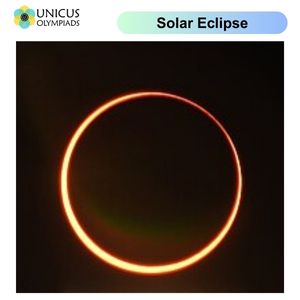
1.1.1 Types of Solar Eclipses
There are three main types of solar eclipses, depending on the alignment of the Earth, Moon, and Sun:
- Total Solar Eclipse: A total solar eclipse occurs when the Moon completely covers the Sun, blocking all direct sunlight. The day turns into night for a short period of time, and the Sun’s corona (outer atmosphere) becomes visible. This type of eclipse is only visible from a small region on Earth, known as the path of totality.
- Partial Solar Eclipse: A partial solar eclipse occurs when only a portion of the Sun is obscured by the Moon. This type of eclipse can be seen by a larger area of the Earth’s surface, but the Sun is never completely covered.
- Annular Solar Eclipse: An annular solar eclipse occurs when the Moon is farther from the Earth in its elliptical orbit, making it appear smaller in the sky. As a result, the Sun forms a bright ring, or "ring of fire," around the dark disk of the Moon.
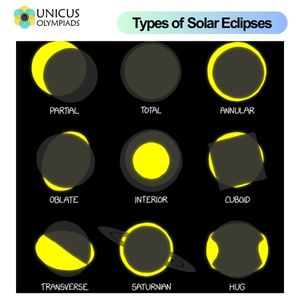
1.1.2 Example of a Solar Eclipse
One of the most recent total solar eclipses occurred on December 14, 2020. This eclipse was visible from parts of South America, particularly Chile and Argentina. Observers in these regions witnessed the dramatic moment when the Moon completely covered the Sun, resulting in a few minutes of twilight-like darkness.
1.2 Lunar Eclipse
A lunar eclipse occurs when the Earth passes between the Sun and the Moon, casting a shadow on the Moon. This phenomenon can only take place during a full moon when the Sun, Earth, and Moon are in a straight line. Unlike a solar eclipse, a lunar eclipse is visible from anywhere on the night side of the Earth, as the Earth’s shadow is much larger than the Moon’s shadow.
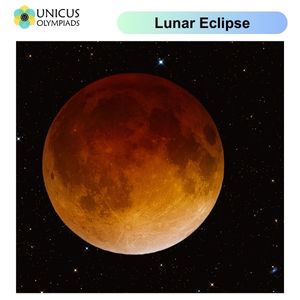
1.2.1 Types of Lunar Eclipses
Lunar eclipses can also be categorized into three main types:
- Total Lunar Eclipse: A total lunar eclipse occurs when the Moon passes entirely through the Earth's umbra (the darkest part of its shadow), causing the Moon to appear red or orange. This is often called a "blood moon" due to the reddish hue.
- Partial Lunar Eclipse: A partial lunar eclipse happens when only a portion of the Moon enters the Earth's umbra. In this case, part of the Moon darkens while the rest remains brightly lit.
- Penumbral Lunar Eclipse: A penumbral lunar eclipse occurs when the Moon passes through the Earth's penumbral shadow (the lighter outer part of the Earth's shadow). This type of eclipse is subtle and difficult to observe because the dimming of the Moon is faint.
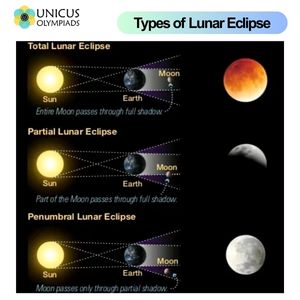
1.2.2 Example of a Lunar Eclipse
An example of a total lunar eclipse occurred on May 15-16, 2022, which was visible from parts of North and South America, Europe, and Africa. The event was notable for the bright red color of the Moon, which occurred due to the scattering of sunlight through Earth’s atmosphere. This is the "blood moon" effect, which happens when Earth’s atmosphere filters out shorter wavelengths of light, allowing only the red portion of the light spectrum to reach the Moon.
2. How Do Orbits Affect Satellites?
Orbits play a crucial role in the operation of satellites, determining their altitude, speed, and coverage area. A satellite’s orbit is the path it follows around a planet or celestial body due to gravitational forces. The Earth's gravity pulls satellites towards it, but the satellite’s high speed causes it to constantly "fall" around the Earth instead of directly toward it. The balance between the satellite's velocity and the pull of gravity results in a stable orbit.
2.1 Types of Orbits
There are several types of orbits that satellites can follow, depending on their intended purpose and the altitude at which they operate:
- Low Earth Orbit (LEO): LEO is the most commonly used orbit for satellites, with altitudes ranging from 160 to 2,000 kilometers (100 to 1,240 miles) above Earth. Satellites in LEO are used for communication, Earth observation, and scientific missions. The International Space Station (ISS) orbits in LEO, typically at an altitude of about 400 kilometers (250 miles).
- Geostationary Orbit (GEO): Satellites in geostationary orbit orbit at an altitude of approximately 35,786 kilometers (22,236 miles) above Earth’s equator. These satellites remain fixed over a specific point on Earth’s surface, which is useful for communication, weather forecasting, and broadcasting. GEO satellites take 24 hours to complete one orbit, which matches the Earth’s rotation.
- Medium Earth Orbit (MEO): MEO lies between LEO and GEO, typically between 2,000 and 35,786 kilometers (1,240 to 22,236 miles) above Earth. Navigation satellites, such as those in the Global Positioning System (GPS), operate in MEO. These satellites take several hours to complete one orbit.
- Polar Orbit: Polar orbits allow satellites to pass over Earth’s poles, providing global coverage. These orbits are commonly used for Earth observation satellites that monitor climate, weather, and land changes, as they can scan the entire surface of the planet over time.
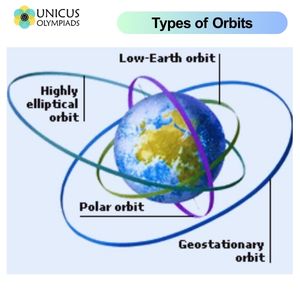
2.2 Examples of Satellite Orbits and Their Impact
Different types of orbits are used for various purposes, depending on the mission requirements of the satellite. Below are some examples:
- LEO Satellites: The Hubble Space Telescope, which observes distant galaxies, is located in low Earth orbit. Its proximity to Earth allows it to take detailed images of the universe with minimal interference from the Earth’s atmosphere.
- GEO Satellites: Communication satellites, like those used by television providers, orbit in geostationary orbit. These satellites provide consistent coverage of specific regions, allowing for uninterrupted services.
- GPS Satellites (MEO): The GPS system uses satellites in medium Earth orbit to provide location and timing information to users around the world. These satellites are positioned at an altitude where they can provide coverage to the entire planet.
2.3 Orbital Decay and Satellite Life Span
Over time, the orbits of satellites can decay due to atmospheric drag and gravitational perturbations. This causes their orbits to gradually lower, and eventually, the satellite may re-enter Earth’s atmosphere and burn up. Satellites in low Earth orbit are particularly affected by atmospheric drag, while those in higher orbits experience much less resistance. To extend the life of satellites, operators may perform maneuvers to adjust their orbits, a process known as "orbital station-keeping."






